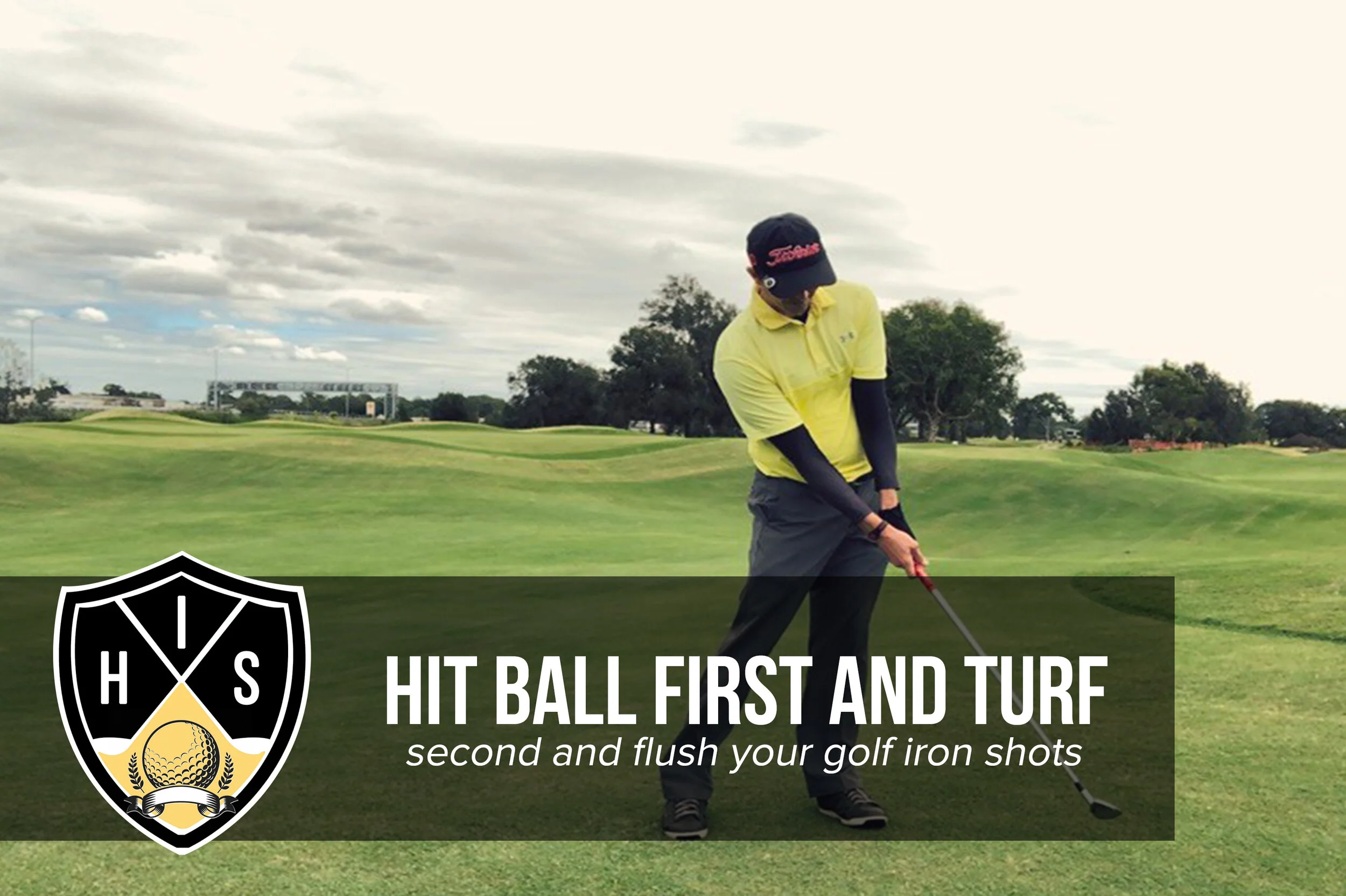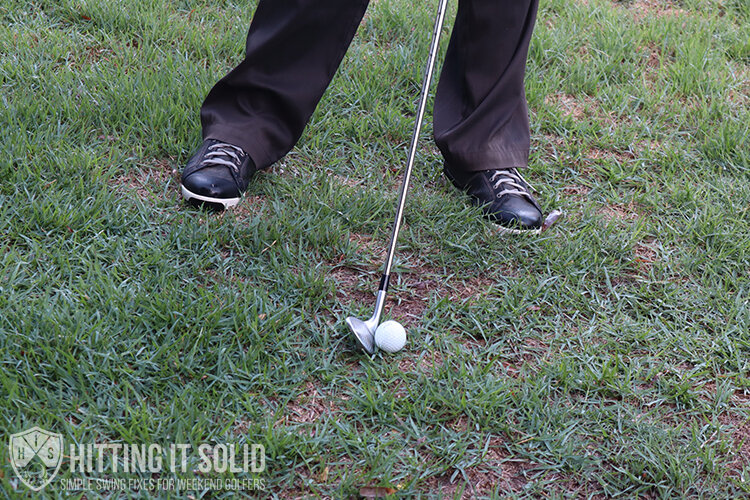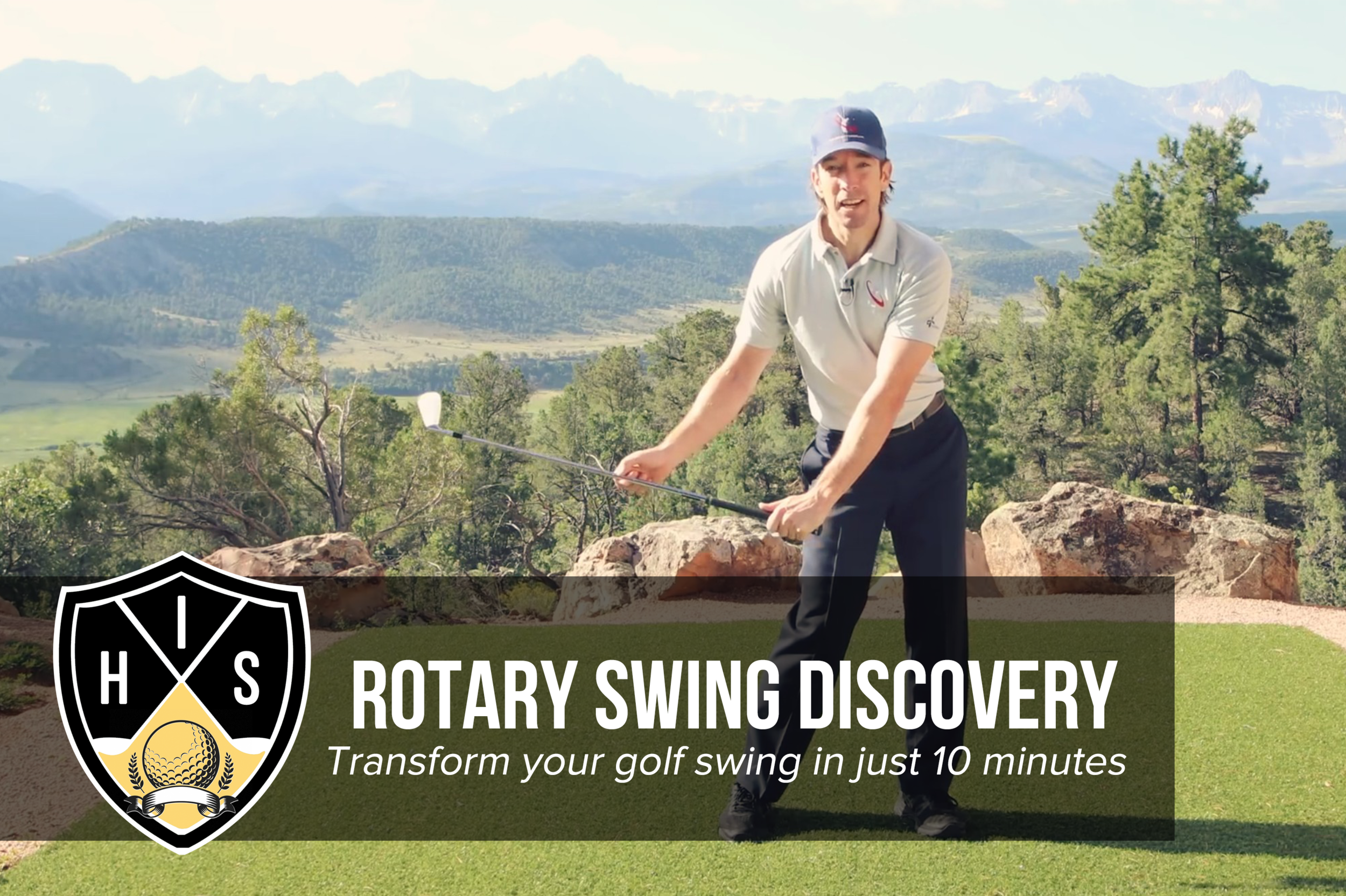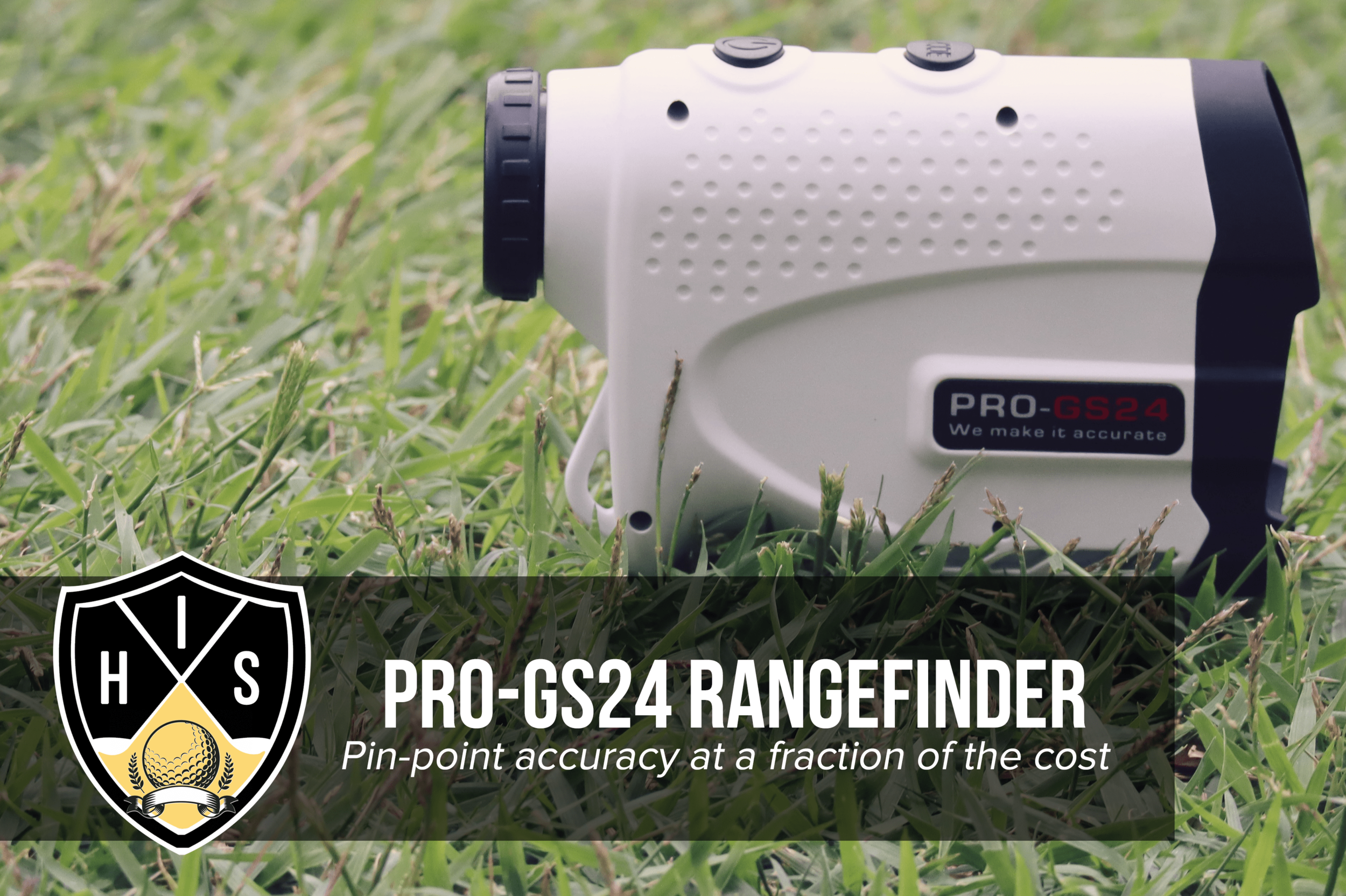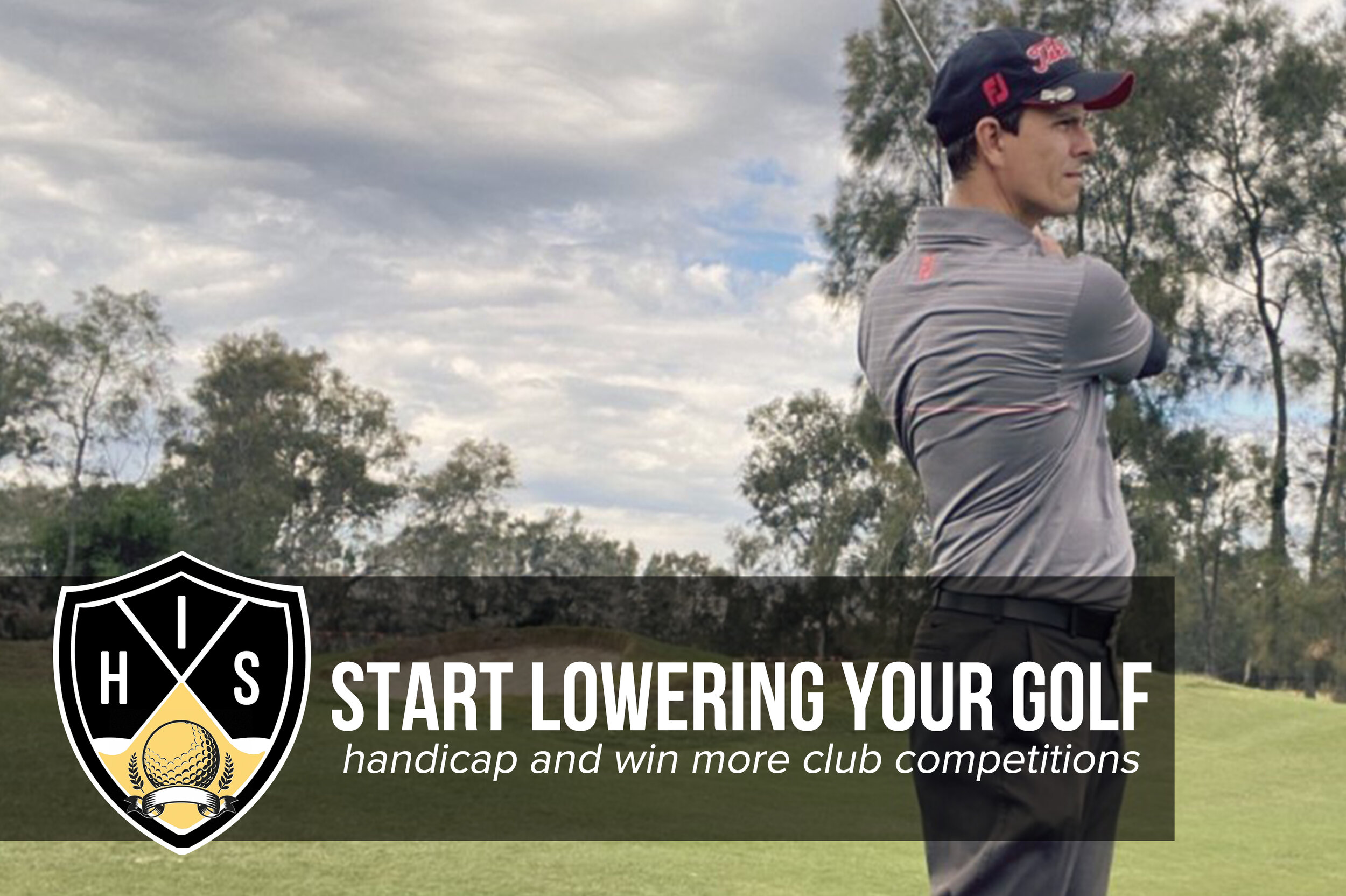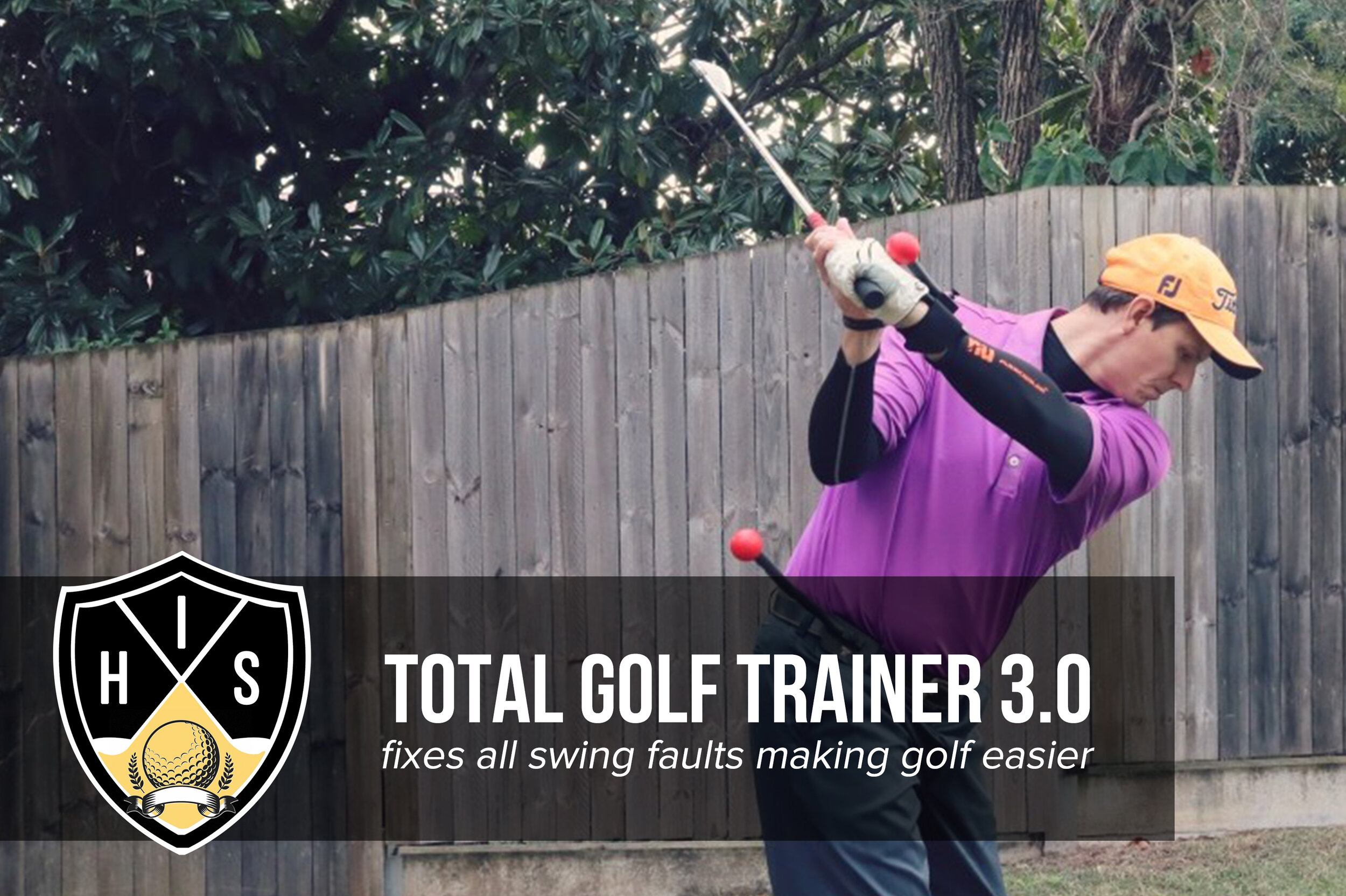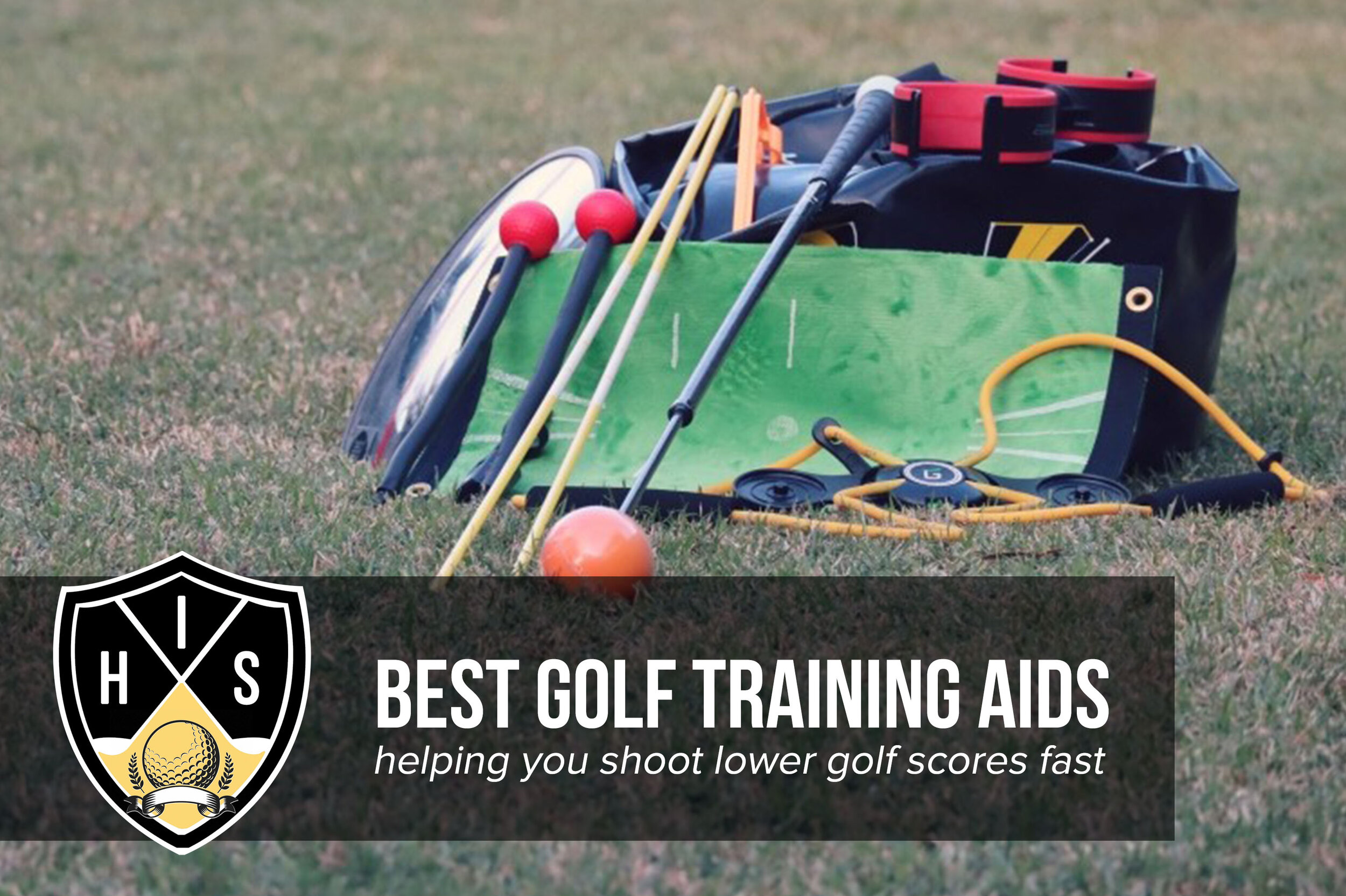Solid Irons With Ball First Then Turf Contact
One of the best feelings in golf is crushing a golf iron shot and watching it fly into the distance and hit your target. To do this, you need to know how to hit the ball then the turf with your irons. Your golf irons are designed to perform at their best when they hit shots like this, so it makes sense to play them this way. It’s the only way to strike pure irons and the way the best players in the world have been doing it for decades. Try to do it any other way and you’re setting yourself up for disaster and years of frustration on the golf course. The lag shot golf training aid teaches you to lag the club so you hit the ball first and turf second.
In this post, I’m giving you the keys you need to hit solid iron shots leading to more distance and accuracy.
No more thin, fat, toe, or heel golf iron shots. Just solid and well-compressed shots striking the ball first and then taking a nice divot.
Regardless of your current handicap or skill level, you can learn and understand how to hit solid irons and take your golf game to the next level.
3 SECRET MOVES I WISH I WAS SHOWN WHEN I FIRST PLAYED GOLF
Why you can’t hit your irons solid
Your ability to hit solid iron shots isn’t just about the position of the clubhead at impact but directly relates to the position of your hands, arms, and the rest of your body. This all ties in with getting the clubhead to hit the ball first and the turf second at impact. Most golfers do it the opposite way and you might be one of them. That is, hitting the ground first and then the ball.
These are the keys you might be getting wrong:
Hands behind the ball at impact
Improper weight shift during the swing
Added loft to the clubhead
When you strike a solid golf iron shot, your hands will be in front of the golf ball and the clubhead is lagging behind.
You should have more weight on your front leg or at least more pressure on your lead side.
Finally, in all great iron shots, the clubface is delofted at impact. In other words, if your iron loft is 45 degrees, it’s 40 degrees at impact (more on this below).
Why delofting your irons is key
Your golf irons are made with a certain degree of loft which can be anywhere from 21 degrees for a 3-iron, and to 45 degrees for a pitching wedge. If you look at your golf irons, you’ll see when you sit them on the ground they slant backward. This means to make them work as efficiently as possible, they need to strike the golf ball on a slight descending path hitting the ball first and then the turf second.
Taking this a step further, delofting your golf irons from set up to impact is vital if you want to hit solid golf iron shots.
For example, if you are hitting a pitching wedge that has around 45 degrees of loft, you would like to see this reduced to 40 degrees or lower at impact.
When you strike the golf ball on a slight descending path, you deloft the iron and strike the ball first, turf second producing the optimal golf impact position.
This is how the tour professionals hit the golf ball so far. They are able to turn pitching wedges with a loft of 45 degrees into 8-irons with the right position at impact.
Forward shaft lean and a flat lead wrist
Getting forward shaft lean and a flat lead wrist at impact is a must if you want to hit the ball first and the ground second. It’s the only consistent way of striking the ball at the right time in the downswing ensuring solid contact. Doing the exact opposite with a cupped wrist and a shaft tilted back towards you, results in the added loft to your irons and lots of scooped and weak golf iron shots.
How much forward shaft lean and flat lead wrist you get depends on your skill level and ability.
Touring professionals get a lot more forward shaft lean and some have more of a bowed wrist than amateurs.
Your irons perform at their optimum when the ball is struck in this position, so it’s a great guide to aim for.
Weight shift and downswing sequencing
To get into the ideal golf impact position and strike your golf iron solid, your weight shift and downswing sequencing must be on point. These 2 areas enable you to shallow the golf club and strike the golf ball first, then the ground. It’s hard to pick up in a good golfer at full speed, but slowed down this move is clear and the reason great ball-strikers can consistently strike their irons pure.
In a good swing, the downswing is initiated by the lower body first and the upper body follows in sequence.
The head will drop as you squat and put pressure on the lead side and push into the ground creating power.
As you approach the golf impact position, the lead leg will straighten, the upper body will have a side bend and the clubhead will lag behind the hands and arms.
This creates lag in the golf swing and makes it easy to compress the golf ball and pure your golf iron shots.
#1 Drill For Ball First Turf Second Contact
This is my favourite drill showing how to hit the ball then the turf with your irons, that’s worked for decades. It’s incredibly simple and one you can practice at home without hitting golf balls. If you’ve struggled to hit the ball first and the ground second, this drill is for you. All you need is a small area of grass to swing a golf club and a line of coloured spray on the ground. If you don’t have any coloured spray you can substitute with a flat towel, an old scorecard, or anything that can be placed down flat without impacting the path of the swing prior to contact.
This fantastic golf drill trains you to bottom out in a consistent spot which ensures ball first contact with your irons.
You don’t need to hit the golf ball at first when doing this. I’d recommended you begin practicing it without hitting balls, and once you feel comfortable with it, progress to hitting short shots and build your way up to full swings.
Start small and progress slowly. This ensures the best chance of succeeding at this drill, increasing your chances of making full swings and hitting solid, well compressed golf iron shots.
Here’s how you do it:
Spray a 2-inch thick line or place a thin towel on the ground about 1 foot long
Grab a pitching wedge or a short golf iron
Set up with your feet touching each other and set up with the club just forward of the line
Move your right foot back as you start a short backswing
Move your left foot back and touch the right finishing your short backswing
Move your left forward towards the target
As your left foot moves forward, commence your downswing and try to hit the ground right where your iron was at set up just in front of the line
Make several of these swing drills and aim to keep hitting just in front of the line
Once you feel comfortable with the small swings and you’re consistently hitting that spot in front of the line, slowly increase the length of your backswing until you get to a full turn and aim to keep hitting that spot.
WATCH THE VIDEO BELOW TO SEE ME DEMONSTRATE THIS DRILL HITTING THE GOLF BALL FIRST THEN THE TURF WITH YOUR IRONS:
Why this drill works so well
The benefit of this golf drill is that it gives you visual feedback on where the golf club is bottoming out in your golf swing. You know if you’re doing it right or if you’re doing it wrong instantly.
The movement of the body and specifically the weight shift in this drill ensures the clubhead lags behind hands increasing your chances of getting forward shaft lean at impact.
Forward shaft lean as stated above, makes it easier to strike the golf ball first in the downswing.
THE LOW POINT IN YOUR GOLF SWING IS KEY
Your golf swing moves on an arc and it’s at the low point of that arc where the clubhead hits the ground, which dictates whether you’ve hit the golf ball first, or hit the turf first. The results you get will vary depending on when you reach the bottom of this arc. This is called the low point in the golf swing. All great golf iron players have a consistent low point where the clubhead hit the ball first, then the turf. It’s how they hit compressed golf iron shots with perfect size divots that fly into the air.
The drill in the video above teaches you to find your low point so you can produce similar golf iron shots.
It also creates a good sequencing motion in the golf swing ensuring the legs start the downswing, allowing the upper body to fall behind and hit the ball on a slight descending arc.
These are good fundamentals in the golf swing ensuring the golf club moves into the impact area in the right position.
Ball first contact for years to come
If you follow these golf swing tips, you’ll be able to strike solid golf iron shots for years to come regardless of your current handicap.
Read through each part of this golf lesson step by step, ensuring you understand the process.
Watch the video and practice the golf drill at home first to ingrain the movement into your golf game.
Progress up to the golf driving range hitting short 50-yard wedge shots to begin, and then work up to full swings.
You now have all the tools you need how to hit the ball then the turf with your irons and play better golf.
IF YOU HAVE ANY QUESTIONS ABOUT THIS POST PLEASE LEAVE A COMMENT BELOW, AND DON’T FORGET TO SHARE WITH YOUR GOLFING MATES AT YOUR FAVOURITE SOCIAL MEDIA ICON TO THE LEFT.
This post may contain affiliate links. I make money from these affiliate links to keep the site free for users, and it is no cost to you.

